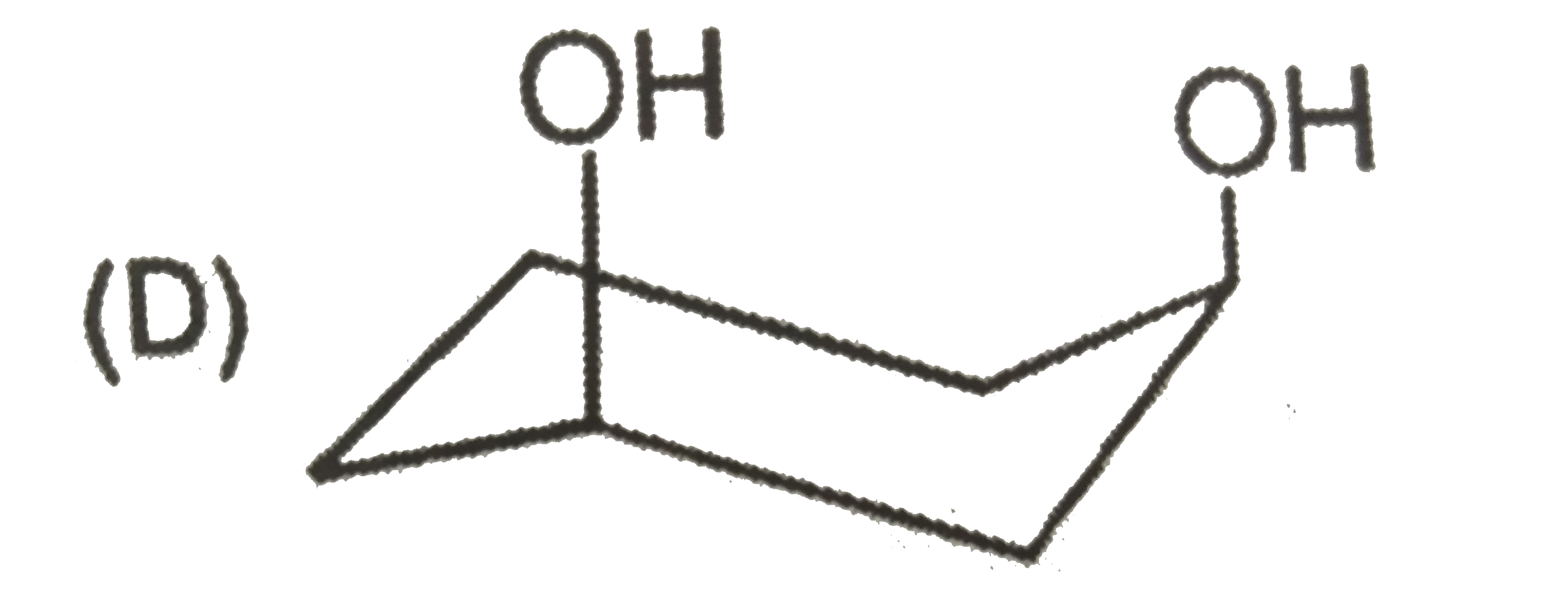cis-1,3-Dibromocyclohexane is represented by structure(s):

I
II
III
II and III
The correct Answer is:A
Topper's Solved these Questions
- ISOMERISM BOOK - AAKASH SERIESCHAPTER - ISOMERISM EXERCISE - ADDITIONAL PRACTICE EXERCISE (LEVEL-II LECTURE SHEET (ADVANCED) MORE THAN ONE CORRECT ANSWER TYPE QUESTIONS)
11 Videos
- ISOMERISM BOOK - AAKASH SERIESCHAPTER - ISOMERISM EXERCISE - ADDITIONAL PRACTICE EXERCISE (LEVEL-II LECTURE SHEET (ADVANCED) LINKED COMPREHENSION TYPE QUESTIONS)
6 Videos
- ISOMERISM BOOK - AAKASH SERIESCHAPTER - ISOMERISM EXERCISE - PRACTICE SHEET ((LEVEL-II) INTEGER TYPE QUESTIONS)
4 Videos
- IONIC EQUILIBRIUM BOOK - AAKASH SERIESCHAPTER - IONIC EQUILIBRIUM EXERCISE - ADDITIONAL PRACTICE EXERCISE (LEVEL -II PRACTICE SHEET (ADVANCED) (Integer Type Questions))
8 Videos
- PERIODIC CLASSIFICATIONBOOK - AAKASH SERIESCHAPTER - PERIODIC CLASSIFICATIONEXERCISE - OBJECTIVE EXERCISE - 3 (RECENT AIPMT/NEET QUESTIONS)
14 Videos
Similar Questions
Knowledge Check
The most stable form of cis cyclohexane -1,3-diol is represented as :1
A B
B C
C D
D
The structures represent
 Ageometrical isomersBpositional isomersCconformational isomersDconfigurational isomers
Ageometrical isomersBpositional isomersCconformational isomersDconfigurational isomersWhich of the following molecules have non zero dipole moments ?
(I) gauche conformation of 1, 2-dibromoethane
(II) anti conformation of 1, 2-dibromoethane
(III) trans-1, 4-dibromocyclohexane
(IV) cis-1, 4-dibromocyclohexane
(V) tetrabromomethane
(VI) 1, 1-dibromocyclohexaneAI and IIBI and IVCII and VDI, IV and VI
1, 2 - Dibromocyclohexane on dehydrobromination gives:
View SolutionCis-1-methlyl-3-isopropylcyclohexane
View SolutionWhich of the following molecules have zero dipole moment?
(I) gauche conformation of 1, 2 - dibromoethane.
(II) anti conformation of 1, 2 - dibromoethane.
(III) trans - 1, 4 - dibromocyclohexane
(IV) cis - 1, 4 - dibromocylohexane
(V) tetrabromomethane.
(VI) 1, 1- dibromocyclohexane
View SolutionWhich of the following molecules have zero dipole moment?
(I) gauche conformation of 1, 2 - dibromoethane.
(II) anti conformation of 1, 2 - dibromoethane.
(III) trans - 1, 4 - dibromocyclohexane
(IV) cis - 1, 4 - dibromocylohexane
(V) tetrabromomethane.
(VI) 1, 1- dibromocyclohexane
View SolutionWhich of the following molecules have non-zero dipole moments ?
(I) gauche conformation of 1,2-dibromoethane
(II) anti conformation of 1,2-dibromoethane
(III) trans-1,4-dibromocyclohexane
(IV) cis1,4-dibromocyclohexane
(V) tetrabromomethane
(VI) 1,1-dibromocyclexane
View Solution

